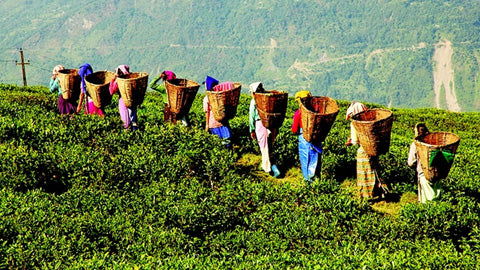An Introduction to Assam and its Famous Black Tea


A few months ago we introduced our members to a special tea from Assam in India called It's Just Assam. This is an Indian tea that bursts with simple flavours. Assam has an abundance of beauty spots and is home to some amazingly hospitable people, so we thought we tell you about what makes teas from this region so special.
Assam tea is a black tea named after the region of its production. The tea is manufactured specifically from the plant Camellia Sinensis var. assamica (Masters). The same tea plant is also traditionally used in the Yunnan province in China. Assam tea is mostly grown at or near sea level and is known for its body, briskness, malty flavour and strong, bright colour. Assam teas, or blends containing Assam, are often sold as "breakfast" teas. For instance, Irish breakfast tea, a more malty and stronger breakfast tea, consists of smaller-sized Assam tea leaves.
Assam is a state in northeast India, situated south of the eastern Himalayas along the Brahmaputra and Barak River valleys. Assam covers an area of 78,438 km2. The state is bordered by Bhutan and Arunachal Pradesh to the north; Nagaland and Manipur to the east; Meghalaya, Tripura, Mizoram and Bangladesh to the south; and West Bengal to the west via the Siliguri Corridor, a 22 kilometres strip of land that connects the state to the rest of India.
As well as tea. the region is also well known for other things like Assam silk. The state was also the first site for oil drilling in Asia. Assam has conserved the one-horned Indian rhinoceros from near extinction, along with the wild water buffalo, pygmy hog, tiger and various species of Asiatic birds, and provides one of the last wild habitats for the Asian elephant. The Assamese economy is aided by wildlife tourism to Kaziranga National Park and Manas National Park, which are World Heritage Sites. Sal tree forests are found in the state which, as a result of abundant rainfall, look green all year round. In fact, Assam receives more rainfall than most parts of India; this rain feeds the Brahmaputra River, whose tributaries and oxbow lakes provide the region with a hydro-geomorphic environment.
We found that we were able to bring some unreal tastes out of this adventure and straight into the cups of our members.




Leave a comment